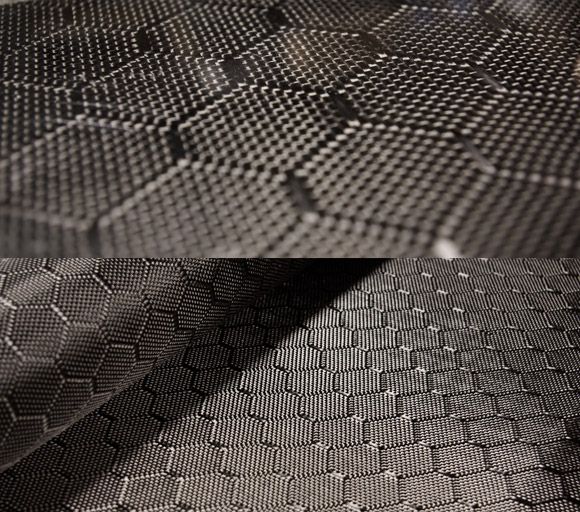
Carbon fiber car parts are increasingly being used in the automotive industry due to their exceptional strength-to-weight ratio, improved aerodynamics, and aesthetic appeal. Car manufacturers are using carbon fiber car parts for both exterior and interior design to enhance the performance and appearance of their vehicles.
The use of carbon fiber car parts in exterior design components, such as hoods, spoilers, and fenders, has a significant impact on a vehicle’s performance. As the use of carbon fiber car parts continues to grow, it is important to understand the manufacturing process used to create them.
Step#1: Materials Sourcing
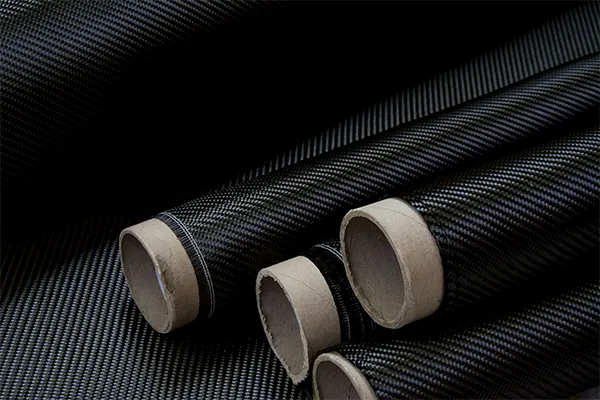
Carbon fiber is made from microscopic fibers that are thinner than a human hair and are composed of mostly carbon atoms. These fibers are combined with a resin system, such as epoxy, phenolic, or polyurethane, to create a strong and lightweight composite material.
The quality of the raw materials used in the manufacturing process is critical to the final product’s strength and durability. Even small variations in the resin system’s quality or the carbon fiber sheets’ consistency can significantly impact the finished product’s overall quality and performance.
The manufacturing process also requires auxiliary materials such as release agents, hardeners, and mold preparation products. These materials help produce high-quality carbon fiber car parts that meet industry standards for strength, durability, and appearance.
By using high-quality raw materials and relying on experienced manufacturers to create carbon fiber car parts, car manufacturers can ensure that their products meet or exceed industry standards and provide the performance and aesthetic appeal desired by customers.
Step#2: Design and Molding
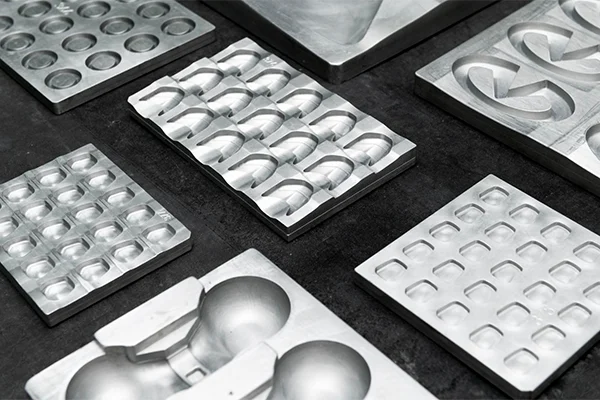
The design and molding process for carbon fiber car parts start with creating accurate molds that will be used to form the parts. The molds are typically made out of materials like aluminum, steel, or composite that are durable and can withstand the high-temperature and pressure required in the production process.
The precision and accuracy of the mold-making process are crucial to ensuring that the carbon fiber car parts are created to the correct specifications. Any deviations from the desired dimensions of the mold can lead to unwanted deformities in the finished parts, which can compromise their quality and performance.
Once the molds are completed, carbon fiber sheets are laid out over the molds and trimmed to size. The carbon fiber sheets are then layered on top of each other and infused with a resin system. The layers can be oriented in different directions to create parts with varying strength and stiffness characteristics.
To ensure the carbon fiber sheets conform well to the molds and are fully infused with the resin, they are often vacuum-bagged. The vacuum bags help to evenly distribute pressure over the entire surface of the carbon fiber, resulting in more consistent and high-quality parts.
Step#3: Prepreg Stage

During the “prepreg” stage of the carbon fiber car part manufacturing process, resin is distributed and the carbon fiber is reinforced. This process involves combining the carbon fiber with a resin system, such as epoxy, to create a strong and durable composite material.
The prepreg process can be accomplished by hand or with specialized machines.
- When done by hand, resin is first applied to the carbon fiber sheets, which are then layered and rolled to ensure even resin distribution. The resin-coated carbon fiber is then cut to size and placed into a mold.
- When using specialized machines, the carbon fiber is fed through a machine which applies the resin to the sheet evenly. The resin-coated carbon fiber can then be cut to size and placed into the mold without the need for manual rolling.
During the prepreg stage, it is important that the correct amount of resin is applied to the carbon fiber to ensure that it is fully infused and reinforced. If there is too little resin applied, the composite material may be too brittle and prone to cracking. On the other hand, if too much resin is used, the weight of the final product may increase, which can compromise the weight reduction benefits of using carbon fiber.
To ensure high-quality carbon fiber car parts are produced, manufacturers must strike a balance between applying the right amount of resin and ensuring even distribution.
Step#4: Formation and Curing
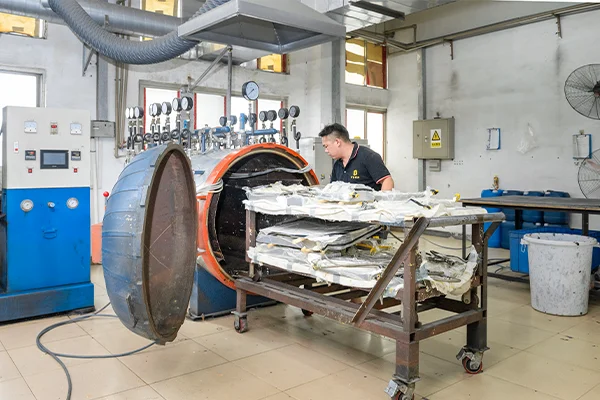
In the formation and curing stage of the carbon fiber car part manufacturing process, the carbon fiber material is formed into its final shape and then cured to create a strong and durable composite material.
The formation process involves placing the carbon fiber material, which has been coated with resin, into a mold. The process requires precision and accuracy to ensure the carbon fiber conforms exactly to the mold’s dimensions. To ensure the carbon fiber stays in place, and to evenly distribute pressure, vacuum bagging is commonly used.
Vacuum bagging involves placing a bag over the mold and surrounding the carbon fiber material, drawing the air out of the bag to create a vacuum, and applying even pressure to the entire surface of the part during the curing process, resulting in high-quality carbon fiber car parts with consistent density and strength.
The curing process is critical in creating high-quality carbon fiber car parts. The curing time, temperature, and pressure must be carefully monitored and controlled to ensure the resin is fully cured and the carbon fiber is properly reinforced. The temperature and pressure are usually applied in stages, with initial low heat and pressure to remove any remaining air, then ramping up to high heat and pressure to complete the curing process.
The final product’s quality and performance greatly depend on the curing process’s accuracy. If the curing process is not done correctly, the carbon fiber car parts may be brittle, weak, or prone to deformation or cracking.
Step#5: Trimming and Cutting
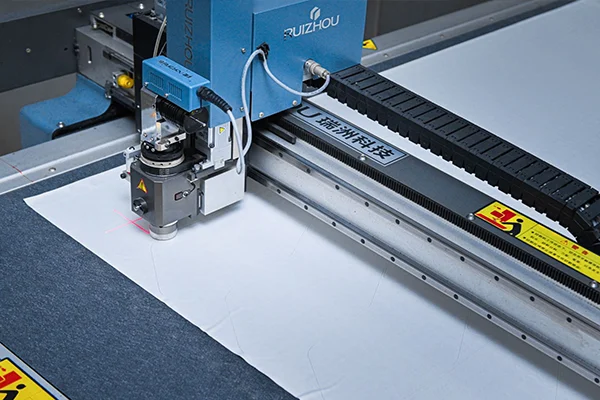
After the carbon fiber car parts have been formed and cured, they must be trimmed and cut to achieve their desired size and shape. Trimming and cutting are critical steps in the manufacturing process as they can affect the final product’s weight, strength, and aesthetics.
The trimming and cutting process typically involves using CNC machines or hand tools, such as saws or scissors, to precisely cut the carbon fiber car parts to their final shape and size. However, the process can be challenging due to the carbon fiber’s brittleness, which means that precise cuts must be made to avoid the material from splintering or breaking.
Precision is especially crucial when trimming and cutting carbon fiber car parts since even a minor deviation from the desired size and shape can impact the part’s performance and appearance. For example, if a part is too large, it may not fit correctly, affecting the assembly of the final product. On the other hand, if a component is too small, it may not provide the necessary level of support, which could cause the structure to weaken or fail over time.
Additionally, since carbon fiber car parts are often used for aesthetic purposes, suboptimal trimming or cutting could affect the part’s visual appeal. Any imperfection, such as rough edges, could undermine the product’s overall quality and negatively impact customer satisfaction.
Step#6: Quality Control
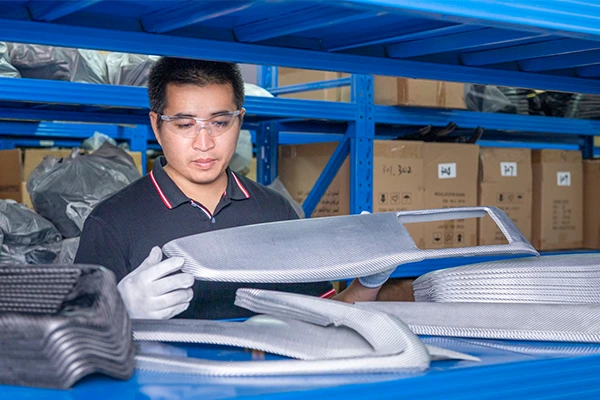
Quality control is an essential aspect of the manufacturing process for carbon fiber car parts. It helps identify defects or imperfections before the final product is released, ensuring that customers receive high-quality parts.
Quality control tests are used throughout the manufacturing process to ensure carbon fiber car parts are properly formed and sufficiently reinforced. The following are some of the most common quality control tests applied:
- Visual inspection: This test is necessary to detect surface imperfections or flaws not visible to the naked eye, such as cracks and bubbles.
- Ultrasonic testing: This test involves the use of sound waves to evaluate the integrity of the composite material.
- X-ray testing: This test uses x-rays to check the composite material’s internal structure in areas where visual inspection is challenging.
- Thermal testing: This test determines the composite material’s ability to withstand high temperatures and provides information about curing completeness.
- Tensile and compression testing: These tests evaluate the strength and durability of the composite material and identify flaws in its construction.
The types of quality control tests applied depend on the carbon fiber car parts’ specifications and the manufacturer’s requirements. Testing frequency also impacts the final product’s quality, with high-frequency testing being more effective in detecting defects early on.
Step#7: Final Inspection and Packaging
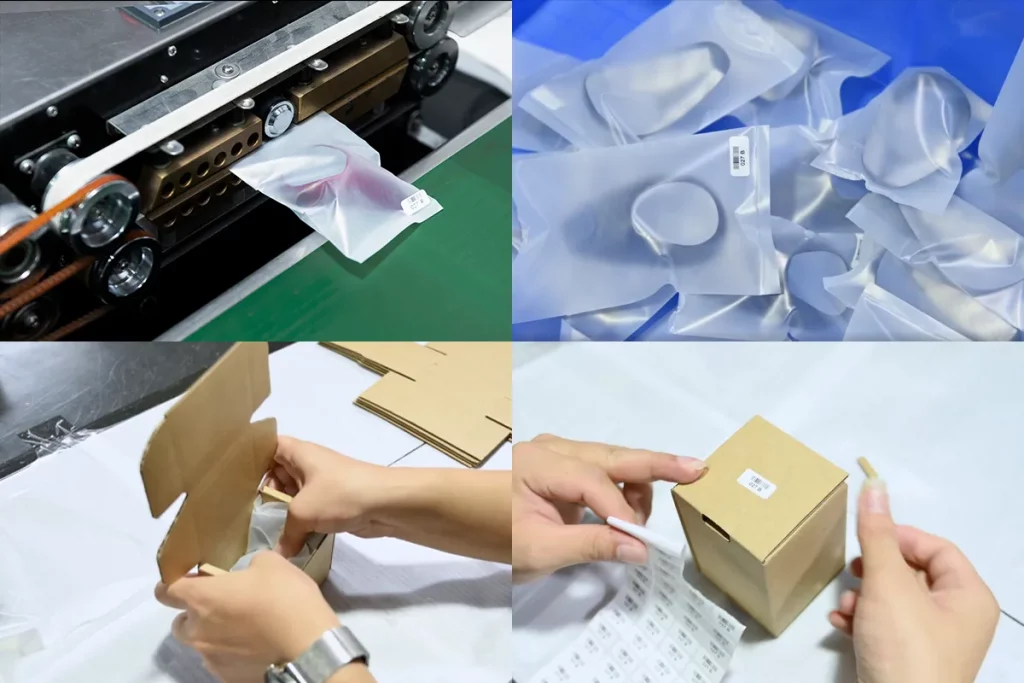
The final inspection process verifies that the carbon fiber car parts are free from defects and meet the required specifications.
Visual Inspection
This process typically involves a visual inspection where the final product is compared against the original design or order specifications. Other testing methods may also be employed, such as ultrasonic or thermal testing, to ensure that the composite material is free from any structural or surface defects. Once the carbon fiber parts pass the final inspection, they are ready for packaging.
Proper Packaging
Proper packaging is essential to protect carbon fiber car parts during transportation and storage. The parts are typically packaged with protective materials, such as foam, bubble wrap, or cardboard, to prevent damage during transit. The packaging used is typically chosen with the transportation method in mind, such as planes having less rigorous packaging requirements compared to ground vehicles.
Labels
Labels with customer information, product identification codes, and barcodes may be added to the packaging. These labels help to identify the parts during inventory management and aid in the tracking and shipping process.
Shipment
Finally, the carbon fiber car parts are prepared for shipment. The handling of the shipment is carefully coordinated with shipping companies to ensure that the products reach their intended destination without delay or damage. Carbon fiber car parts are often shipped to automotive manufacturers, distributors, or directly to customers who have ordered custom parts.
Conclusion
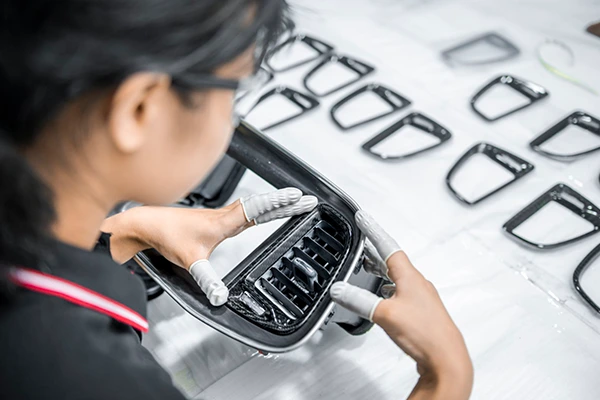
In summary, the manufacturing process for carbon fiber car parts is a complex and meticulous process that involves several stages, including material selection, layup, curing, trimming and cutting, quality control, and final inspection and packaging. Each stage must be executed with precision and accuracy to ensure high-quality products that meet the desired specifications.
Carbon fiber car parts are a crucial component in modern car design, offering unique properties that improve vehicle performance, safety, and aesthetics. The future of carbon fiber car parts in the automotive industry looks promising, and we can expect to see more car manufacturers adopting this material in their products.






